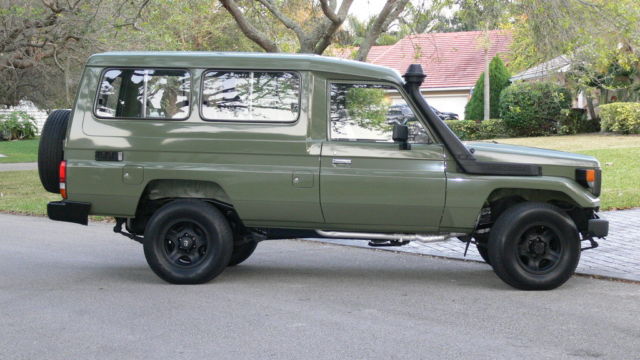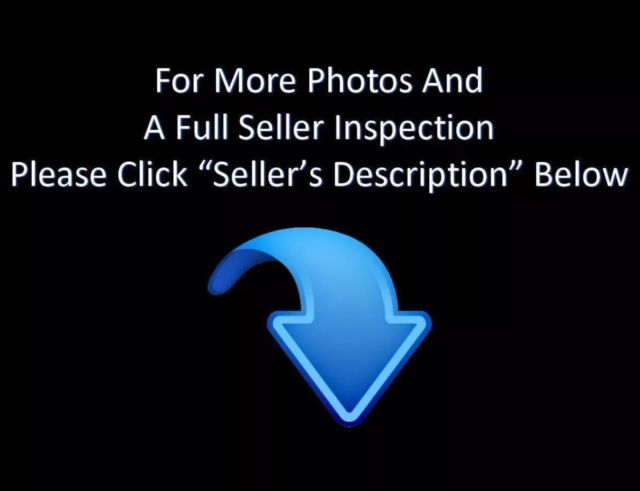NO RESERVE!! JAPANESE IMPORTED, 1985 FZJ 75, RARE, AMPHIBIAN, VERY HARD TO FIND!
- Make: Toyota
- Model: Land Cruiser
- SubModel: FZJ75 TOYOTA LANDCRUISER
- Type: SUV
- Trim: FZJ 75
- Year: 1985
- Mileage: 171,500
- VIN: 00000000000000000
- Color: SAFARI GREEN
- Engine size: V6
- Number of cylinders: 6
- Fuel: Gasoline
- Transmission: Manual
- Drive type: 4X4
- Interior color: GRAY
- Vehicle Title: Clear
- Location: Miami, Florida, United States
Description
MORE 100+PICS BELOW VIDEOS1984 TOYOTA FZJ75 LANDCRUISER PART 1 - DRIVING 1984 TOYOTA FZJ75 LANDCRUISER PART 2 - INTERIOR
1984 TOYOTA FZJ75 LANDCRUISER PART 3 - MOTOR
1984 TOYOTA FZJ75 LANDCRUISER PART 4 - FRONT FRAME
1984 TOYOTA FZJ7 LANDRUISER PART 5 - REAR FRAME
FULL DESCRIPTION BELOW THE 90+ PICS, BE SURE TO CHECK OUT THE
RESTORATION PICTURES BELOW THE DESCRIPTION
DESCRIPTION
Listing this Toyota for my neighbor, he is not as computer savy as I am so he asked for help. He speaks spanish so I will do my best to translate & broker this transaction for him.
EBAY WOULD NOT ALLOW US TO ENTER THE CORRECT VIN SO WE COPIED ONE FROM A USA VERSION 1985 LANDCRUISER. THE REAL VIN IS: FZJ750020844, TITLE IS OPEN UNDER HIS BROTHER IN LAW'S NAME: JOAVANY ALVAREZ SANCHEZ
Original Amphibian from Factory. This FZJ75 was originally owned by the United States Embassy in Japan, to be used in the USA Embassy in Russia for the peace meetings by embassy personnel, and it was later imported to the state of Texas legally by Insurance Auto Auctions by Mr. Nathan Moore. We, "US Auto Plus" purchased it and put it thru a complete restoration. It was completely dissembled and put back together by a professional auto body shop in here in Florida. Every part is original and the truck has never been in any prior accident.
HISTORY
FZJ75 The 70 Series is a family of Toyota Land Cruiser models produced from 1984 until the present day. It replaced the 25-year-old 40 Series as the off-road workhorse of the Land Cruiser heritage, while the 60 Series (and later the 80, 90, 100, 150 and 200 Series) developed into more comfortable passenger off-road vehicles. Despite major changes in styling and numerous technological updates, the 70 Series was designed to retain the off-road capabilities and durability for which the 40 Series had become known. The 70 Series was marketed throughout the world, except for countries like the USA, Canada, Mexico, Brazil and Korea. As a celebration of the Land Cruiser 70's 30th anniversary, Toyota will temporarily market the Land Cruiser 70 series in the Japanese market for 12 months; afterwards, it will be removed from Toyota Japan's product line. HISTORY: Model designation. Originally, model numbers 70 through 74 referred to the two-door short- and medium-wheelbase versions. These were the successors of the 40 Series, such as the FJ40. Model numbers 75 through 77 referred to the long-wheelbase version, which was available in pick-up and two-door troop carrier models and, in a few markets, a four-door wagon. These were the successors of the less-well known long-wheelbase 40 Series, such as the FJ45. In 1999, Toyota introduced several updates and changed the model designations, where the long-wheelbase models became the 78 (troop carrier) and 79 (pick-up). In 2007, the 76 (four-door wagon) was added, while the new dual-cab models also share the 79 model designation (essentially the same chassis). Short-wheelbase models are only in production today for a few select markets. PRODUCTION: 1984–1999. The 70 / 75 series Toyota Land Cruiser took over from the 40 / 45 series of workhorse four-wheel drives in 1984. The styling maintained a family resemblance to the 40 / 45 series but became more angular. The 70 / 71 series was the short-wheelbase (SWB), the 73 / 74 was the medium-wheelbase (MWB) and the 75 / 77 was the long-wheelbase (LWB). The latter came as cab-chassis/utility with a "panelled" tray (pick-up), and "troop carrier" hard-top (HT). Toyota also manufactured lighter duty versions that shared the 70 Series designation from 1985 to 1996, and were marketed in various parts of the world as the Bundera, the Prado, or the Land Cruiser II. Of these, the Prado name stuck, and each modification took it further from its 70 Series roots. Starting in 1997 the Prado was known as the 90 Series, and had become a light-duty passenger 4x4 with no relation to the 70 Series. ENGINE: The Toyota FZ engine was a 24-valve, 4.5L DOHC straight-6 internal combustion engine manufactured by Toyota to replace the F-series engine. It was used primarily in SUVs because of its large displacement, smoothness, ruggedness and torque. The engine displaced 4476 cc with a bore and stroke measuring 100 millimetres (3.9 in) x 95 millimetres (3.7 in), respectively and a 9.0:1 compression ratio; the head used Toyota's narrow-angle overhead camshafts for better fuel economy. The 1FZ had only two variants available: the 1FZ-F and the 1FZ-FE. The only significant difference between the two was the inclusion of electronic fuel injection on the 1FZ-FE, whereas the 1FZ-F used a carburetor. camshafts for better fuel economy. The 1FZ had only two variants available: the 1FZ-F and the 1FZ-FE. The only significant difference between the two was the inclusion of electronic fuel injection on the 1FZ-FE, whereas the 1FZ-F used a carburetor. Starting in 1998, the fuel injected version of the 1FZ-FE was also manufactured with a direct ignition variation available in certain non-US markets (the engine pictured here is that variant discernible by the intake manifold and lack of distributor). The 1FZ-F produced 190 horsepower (140 kW) at 4400 RPM and 268 pound-feet (363 N·m) at 2800 RPM; its fuel injected counterpart produced 212 horsepower (158 kW) at 4600 RPM and 275 pound-feet (373 N·m) at 3200 RPM.
INFORMACION ADICIONAL DEL CARRO:
RESTORATION PROCESS TITLE
" /> " />
More Toyota classic cars for sale
 1969 Toyota Land Cruiser FJ40 Nearly all Original Hard Top RARE Find NO RESERVE
1969 Toyota Land Cruiser FJ40 Nearly all Original Hard Top RARE Find NO RESERVE
 1991 Toyota Land Cruiser HJ73 MWB imported JDM Japanese classic vehicle RHD
1991 Toyota Land Cruiser HJ73 MWB imported JDM Japanese classic vehicle RHD
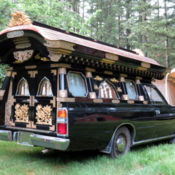 1983 Japanese Hearse - Ultra Rare Find! Toyota Crown, 6 cyl., 4 speed, RH drive
1983 Japanese Hearse - Ultra Rare Find! Toyota Crown, 6 cyl., 4 speed, RH drive
 NO RESERVE RARE! TOYOTA FJ73 LANDCRUISER,JAPANESE 100%, Canvas Top,Convertible
NO RESERVE RARE! TOYOTA FJ73 LANDCRUISER,JAPANESE 100%, Canvas Top,Convertible
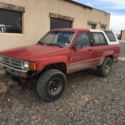 HARD TO FIND 1985 TOYOTA 4RUNNER REBUILT ENGINE 5 SPEED EFI SOLID FRONT AXLE!
HARD TO FIND 1985 TOYOTA 4RUNNER REBUILT ENGINE 5 SPEED EFI SOLID FRONT AXLE!
 1987 Toyota 4 Runner 4x4 **Rare** Hard to find
1987 Toyota 4 Runner 4x4 **Rare** Hard to find
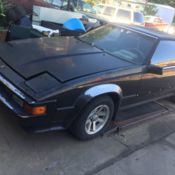 1985 Toyota Celica Supra ***Rare Find***
1985 Toyota Celica Supra ***Rare Find***
 NISSAN PATROL 1969 / Extremely Rare / VERY FEW IMPORTED.
NISSAN PATROL 1969 / Extremely Rare / VERY FEW IMPORTED.
 1976 Japan Imported Toyota Celica JDM RHD TA28 RARE
1976 Japan Imported Toyota Celica JDM RHD TA28 RARE
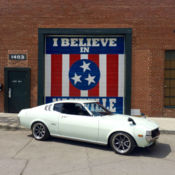 1976 Japan Imported Toyota Celica RHD TA28 RARE
1976 Japan Imported Toyota Celica RHD TA28 RARE
 1969 Toyota Land Cruiser FJ40 Nearly all Original Hard Top RARE Find NO RESERVE
1969 Toyota Land Cruiser FJ40 Nearly all Original Hard Top RARE Find NO RESERVE
Year: 1969
Mileage: 55,899
Mileage: 55,899
 1991 Toyota Land Cruiser HJ73 MWB imported JDM Japanese classic vehicle RHD
1991 Toyota Land Cruiser HJ73 MWB imported JDM Japanese classic vehicle RHD
Year: 1991
Mileage: 32,504
Mileage: 32,504
 1983 Japanese Hearse - Ultra Rare Find! Toyota Crown, 6 cyl., 4 speed, RH drive
1983 Japanese Hearse - Ultra Rare Find! Toyota Crown, 6 cyl., 4 speed, RH drive
Year: 1980
Mileage: 55,000
Mileage: 55,000
 NO RESERVE RARE! TOYOTA FJ73 LANDCRUISER,JAPANESE 100%, Canvas Top,Convertible
NO RESERVE RARE! TOYOTA FJ73 LANDCRUISER,JAPANESE 100%, Canvas Top,Convertible
Year: 1987
Mileage: 193,905
Mileage: 193,905
 HARD TO FIND 1985 TOYOTA 4RUNNER REBUILT ENGINE 5 SPEED EFI SOLID FRONT AXLE!
HARD TO FIND 1985 TOYOTA 4RUNNER REBUILT ENGINE 5 SPEED EFI SOLID FRONT AXLE!
Year: 1985
Mileage: 268000
Mileage: 268000
 1987 Toyota 4 Runner 4x4 **Rare** Hard to find
1987 Toyota 4 Runner 4x4 **Rare** Hard to find
Year: 1987
Mileage: 169,789
Mileage: 169,789
 1985 Toyota Celica Supra ***Rare Find***
1985 Toyota Celica Supra ***Rare Find***
Year: 1885
Mileage: 108,814
Mileage: 108,814
 NISSAN PATROL 1969 / Extremely Rare / VERY FEW IMPORTED.
NISSAN PATROL 1969 / Extremely Rare / VERY FEW IMPORTED.
Year: 1969
Mileage: 89,000
Mileage: 89,000
 1976 Japan Imported Toyota Celica JDM RHD TA28 RARE
1976 Japan Imported Toyota Celica JDM RHD TA28 RARE
Year: 1976
Mileage: 41,196
Mileage: 41,196
 1976 Japan Imported Toyota Celica RHD TA28 RARE
1976 Japan Imported Toyota Celica RHD TA28 RARE
Year: 1976
Mileage: 41,200
Mileage: 41,200
